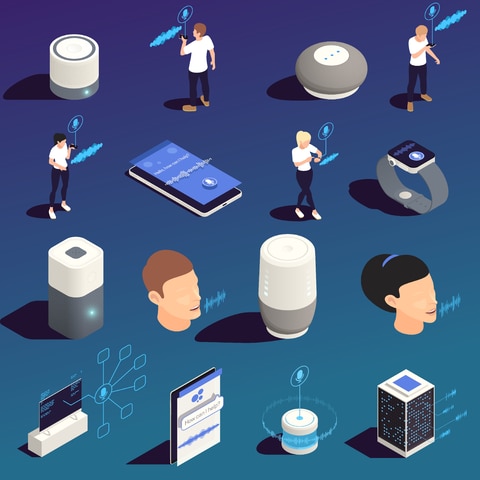
(Image credit: Freepik)
AI is no longer limited to cloud data centers or high-performance machines; it’s being pushed to the edge in the form of mobile devices, smart cameras, industrial sensors, wearables, and other consumer platforms. These systems are designed to be “always-on,” listening, monitoring, or analyzing without pause. While engineers have made great strides in bringing AI to the forefront of next-gen technology, it hasn’t been without its challenges. That always-on activity drains energy, and most edge devices are battery-powered or operate in environments where power is limited. To mitigate that challenge, engineers have turned toward low-power designs, which have become the make-or-break factor for bringing edge AI to real-world deployment.
The need for efficiency isn’t just about battery life, however, as always-on devices can’t rely on oversized batteries or frequent recharging without undermining their usefulness. Voice assistants, predictive maintenance sensors, and health monitors all depend on running nonstop with minimal power. Reducing that power chug also keeps thermal issues under control, extends product lifetimes, and lowers costs for manufacturers and users alike. The demand for edge AI is growing, but without low-power strategies, its potential is stunted.
Many engineers feel that designing for low power begins at the hardware design level. General-purpose CPUs aren’t efficient enough for continuous AI workloads, which is why dedicated accelerators and domain-specific chips have become common. Similarly, architectures like Arm’s big.LITTLE design, or microcontrollers equipped with specialized AI instruction sets also allow devices to scale compute performance depending on the requirements needed. According to Intel, Neuromorphic Processors, still early in adoption, can reduce power demands by mimicking the human brain’s electrical pulses to execute inference at a fraction of the power. These approaches aim to maximize processing efficiency per watt, rather than increasing raw performance.
Power management techniques also play a central role in power reduction. According to a recent paper from the University of Thessaloniki, dynamic voltage and frequency scaling (DVFS) allows chips to adjust their operating states on the fly, consuming energy only when higher performance is required, similar to processors from AMD and Intel while when lifting heavy processing loads. Sleep and wake cycles also ensure subsystems aren’t running needlessly, with sensors or AI triggers waking the device only when necessary. The same with event-driven processing, which allows systems to remain in low-power standby until specific inputs activate them. Those techniques have been proven effective in wearables and IoT devices that can’t afford wasted cycles.
On the software side, optimizing the AI models themselves is just as important. Running a massive deep neural network at the edge isn’t feasible, so developers employ pruning, quantization, and knowledge distillation techniques to strip models down while still retaining accuracy. TinyML is a great example, producing lightweight algorithms designed for microcontrollers that sip power instead of chugging it. Efficient algorithms paired with low-power silicon form the backbone of modern always-on design.
These strategies are already in use across various industries. Consumer devices, such as always-listening earbuds and smart speakers, rely on ultra-low-power audio detection that only activates full AI pipelines after a wake word is detected. In industrial IoT, sensors that monitor motors or heavy equipment can analyze vibration, heat and other critical impact data locally, transmitting only when anomalies are detected. Healthcare devices, from heart monitors to glucose trackers, also utilize low-power microcontrollers to deliver continuous, accurate monitoring without frequent recharging. Companies like NXP, Ambiq, Qualcomm, and Arm are all developing their own solutions for low-power edge AI, with silicon optimized specifically for power efficiency.
In the coming decade, the crusade to make devices smarter without draining more power will continue to increase. TinyML will continue to shrink models to fit within milliwatt budgets, while silicon makers refine architectures tuned for AI workloads. Renewable energy could also help supplement batteries, which would increase device lifetimes. That said, always-on edge AI won’t just be about using the latest hardware tricks or algorithms, but about complete systems designed from the ground up with efficiency as a key priority.
Have a story tip? Message me here at element14.
